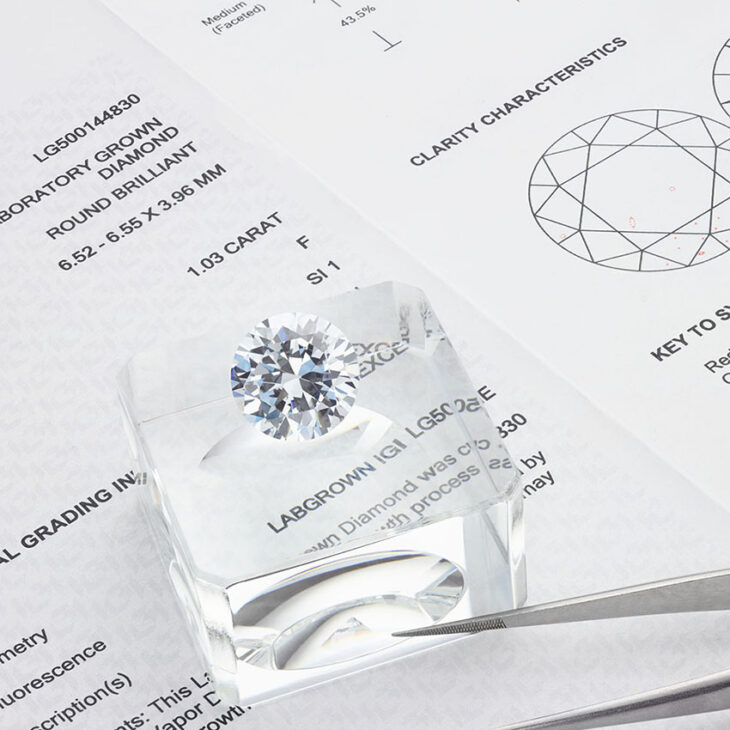SI1 clarity diamonds feature small inclusions visible under 10 x magnification but are generally referred to as eye-clean diamonds. As a result, SI1 diamonds appear clear of marks to the naked eye.
The term SI1 comes from a scale of clarity grading from GIA (The Gemological Institute of America) — a system adopted worldwide used to grade the clarity of a diamond. In short, the abbreviation means “Slightly Included.” The suffix number (in this case 1) represents the higher of two near-identical clarity grades. With this in mind, SI1 stands above SI2 clarity, demanding higher prices by comparison.
At the same time, this ‘acceptable’ clarity of diamond makes a very popular choice. In short, a balance between cost and clarity suits many buyers without having to pay a premium for the highest clarity grades.
Example of diamond clarity SI1.
The following short video shows a 6.5mm 1-carat round brilliant cut diamond with natural SI1 inclusions within the diamond. Keep in mind the very large scale of the video. To the naked eye, the diamond appears clear of marks with inclusions only visible at higher magnification.
Which is better? SI1 or VS1 clarity?
As noted, we work to the GIA scale of clarity grading. As a result, VS1 represents two grades higher by comparison. For this reason, VS1 diamonds cost considerably more than SI1 diamonds.
Which to choose VS2 or SI1?
If your budget accommodates VS2 clarity, we would always advise a higher grade. However, for most buyers opting for a diamond below 1 carat, SI1 clarity makes perfect sense. But in certain instances, SI1 clarity diamonds fail to disguise small inclusions more readily seen. For example, Emerald-cut diamonds styled with step-cut facets reveal small inclusions typically hidden by brilliant-cut diamonds. For this reason, consider the size of your diamond and the shape of your stone.
Natural or lab-grown diamond clarity SI1.
Over the last 12 months, sales of lab-grown diamonds have exploded. Not surprisingly, their popularity accounts for a much larger proportion of our own engagement ring sales. Their lower cost means buyers achieve a much better, larger diamond for a fraction of the cost of a natural diamond.
Due to the way rough diamonds are grown in a laboratory, the process makes it easier to create diamonds with high clarity grades. As a result, a large majority of lab-grown diamonds are graded between D – F colour and VVS – SI1 clarity. Surprisingly, buyers can source a lab-diamond with an SI1 clarity at approximately 50% lower than an equivalent natural diamond.
About Mark Johnson
My name is Mark and I'm founder at Serendipity Diamonds. By day you'll find me working in our showroom—in a variety of roles. My work (which I love) ranges from photographing jewellery, to writing blog posts and helping clients with my colleagues Drina, Emily and Debbie.



